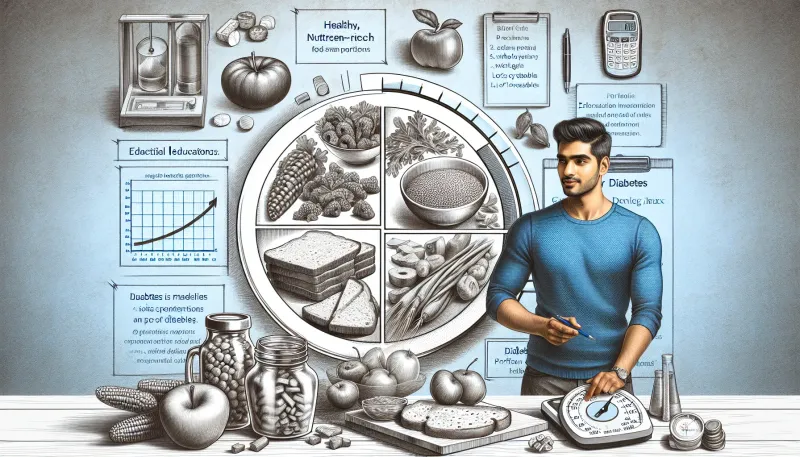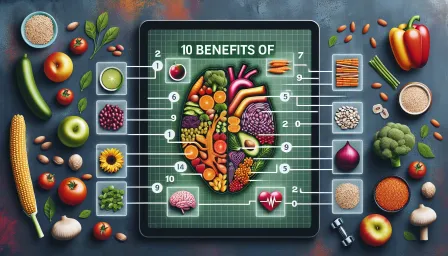Mastering Portion Control for Diabetes: Essential Tips for a Healthier Life

Discover essential tips on mastering portion control for managing diabetes effectively. Learn practicable strategies, portion sizes, and meal planning for a healthier life.
Living with diabetes can be challenging, but one of the most effective ways to manage blood sugar levels and maintain a healthy lifestyle is through proper portion control. By understanding portion sizes and incorporating mindful eating practices, individuals with diabetes can take significant steps toward better health. In this article, we'll delve into essential tips for mastering portion control, discuss the benefits, and provide practical advice for everyday meal planning.
Understanding the Importance of Portion Control for Diabetes
Portion control is crucial for individuals with diabetes because it directly impacts blood sugar levels. Consuming large portions, especially of carbohydrate-rich foods, can lead to spikes in blood glucose. Conversely, managing portion sizes helps in maintaining steady blood sugar levels, preventing complications such as hyperglycemia.
The Role of Carbohydrates
Carbohydrates have the most significant impact on blood sugar levels, making it essential to monitor their intake closely. By understanding how different types of carbohydrates affect the body, individuals can make informed choices about their meals. Foods like whole grains, fruits, and vegetables provide essential nutrients while having a gentler impact on blood sugar compared to refined sugars and processed foods.
Essential Tips for Mastering Portion Control
Use Measuring Tools
Utilize measuring cups, spoons, and a kitchen scale to accurately measure portion sizes. Familiarizing yourself with standard serving sizes can make it easier to control portions and avoid overconsumption.
Adopt the Plate Method
The Plate Method is a simple and effective strategy for portion control. It involves dividing your plate into sections: half for non-starchy vegetables, a quarter for lean proteins, and a quarter for whole grains or starchy foods. This method ensures a balanced meal while controlling carbohydrate intake.
Practice Mindful Eating
Mindful eating involves paying attention to hunger cues and eating slowly to prevent overeating. By savoring each bite and being conscious of the eating experience, individuals can achieve better portion control and enjoy their meals more.
Plan Meals Ahead
Meal planning can help avoid last-minute decisions that often lead to unhealthy choices. By preparing meals in advance, individuals can ensure portion sizes are appropriate and nutritionally balanced. Consider pre-packaging snacks and meals for convenience.
Practical Portion Control Strategies
Visual Portion References
Using visual cues can simplify portion control. For instance, a portion of meat should be about the size of a deck of cards, while a serving of cooked pasta or rice should resemble a tennis ball. These references help estimate portions without the need for measuring tools.
Reading Food Labels
Understanding food labels is vital for portion control. Pay attention to serving sizes and the number of servings per container. This information helps gauge how much to eat and the nutrient content of each portion.
Managing Portions When Dining Out
Dining out can present challenges for portion control. Opt for smaller portions, share meals with a friend, or ask for a to-go box and portion your meal before eating. These strategies help avoid overeating and maintain control over portions.
Sample Meal Plan for Portion Control
Below is a sample meal plan that incorporates portion control techniques:
Breakfast
- 1 serving (¾ cup) of whole-grain oatmeal topped with fresh berries
- 1 boiled egg
- 1 cup of low-fat milk
Lunch
- Salad: 2 cups mixed greens, ½ cup chickpeas, ¼ cup shredded carrots, ¼ avocado, 1 tablespoon of olive oil and vinegar dressing
- 1 serving (3 ounces) of grilled chicken
- 1 small whole-grain roll
Snack
- 1 small apple
- 1 ounce of almonds (about 23 almonds)
Dinner
- 1 serving (3 ounces) of baked salmon
- 1 cup of steamed broccoli
- ½ cup of quinoa
Conclusion
Mastering portion control is a fundamental aspect of managing diabetes. By incorporating practical tips and strategies such as using measuring tools, adopting the Plate Method, practicing mindful eating, and planning meals ahead, individuals can maintain healthier blood sugar levels and improve their overall wellbeing. Remember, the goal is to make portion control a sustainable part of your daily routine, empowering you to lead a healthier life with diabetes.



























